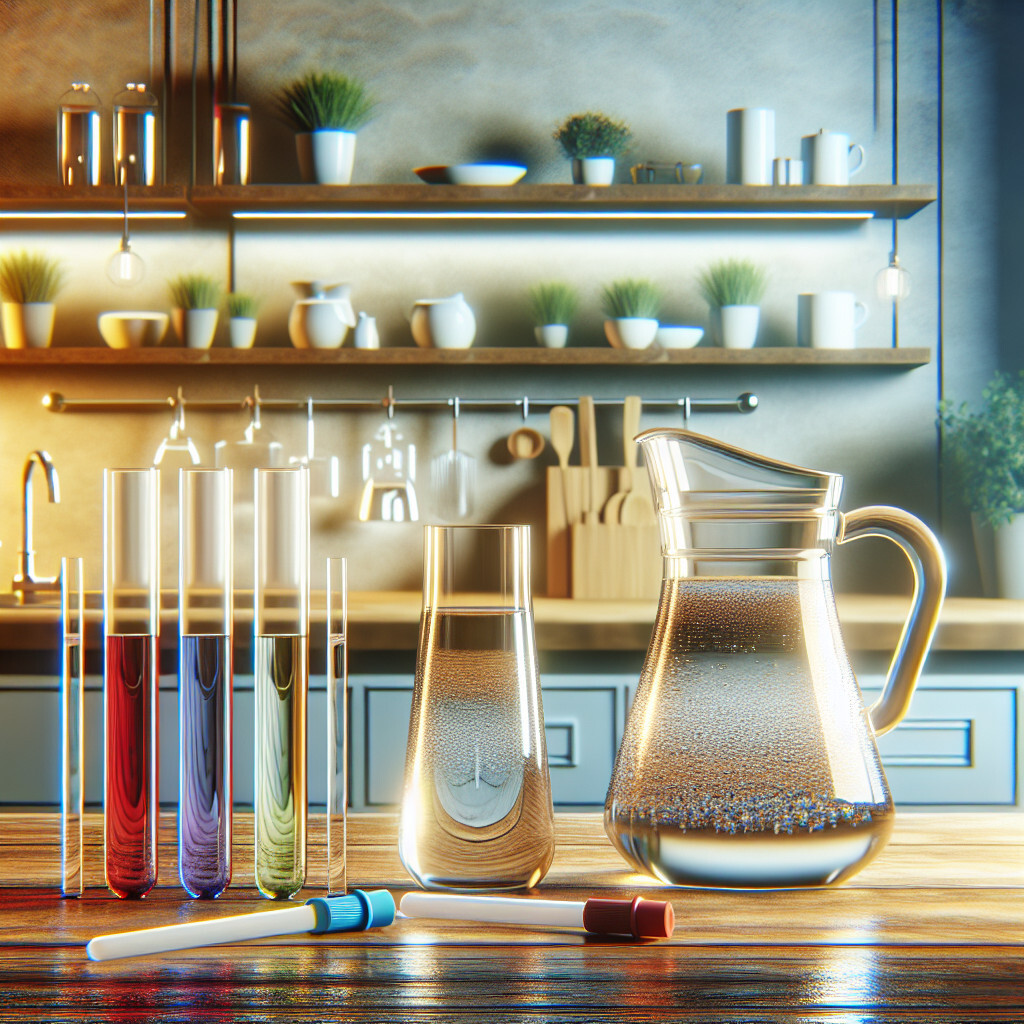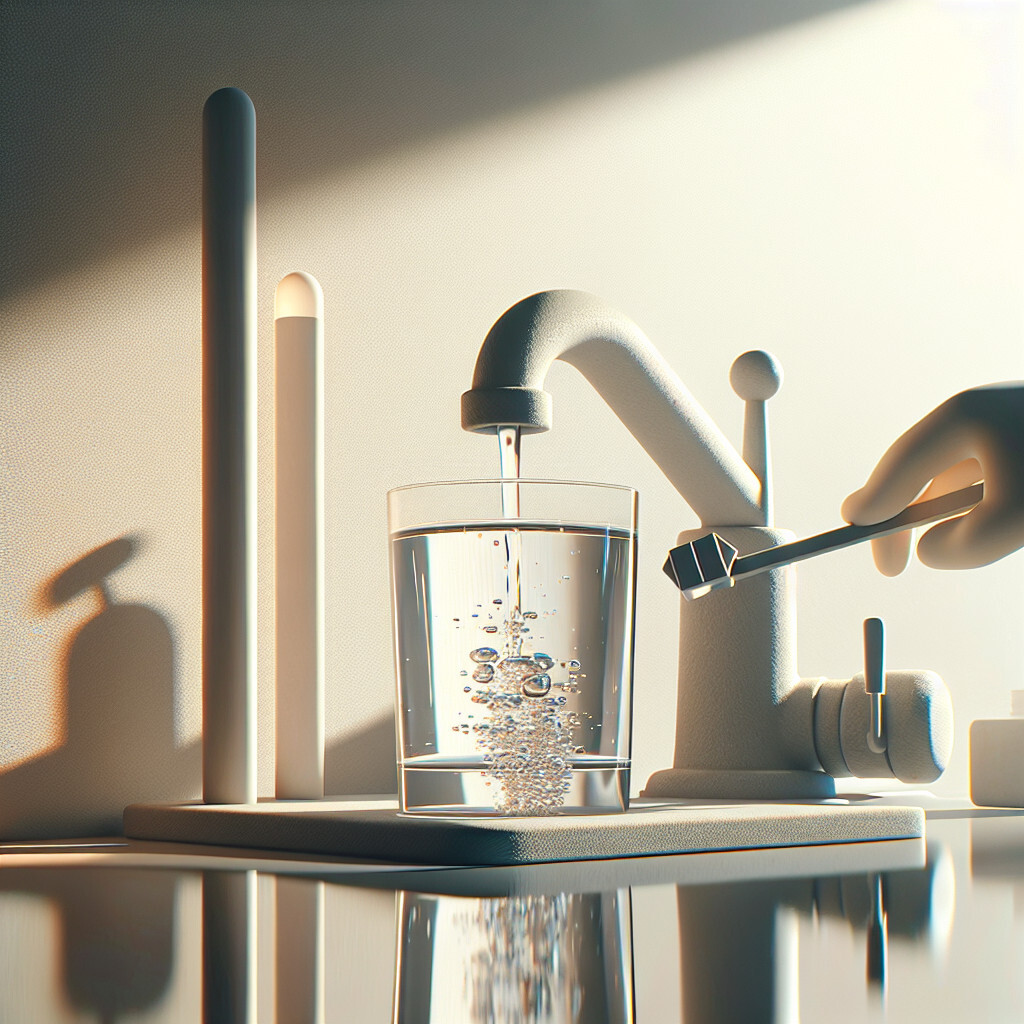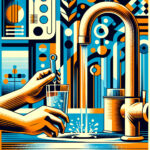-
Table of Contents
“Unveiling Purity: Your Guide to Testing Tap Water”
Introduction

Testing tap water involves a series of procedures to determine its quality and safety for consumption. This process includes checking for various contaminants such as bacteria, lead, pesticides, nitrates, chlorine, hardness, and pH levels. It can be done using different methods such as home testing kits, digital instruments, or sending samples to a professional laboratory. The results can help identify any potential health risks and guide necessary treatments or filtration to ensure the water is safe to drink.
Understanding the Basics of Tap Water Testing
Understanding the basics of tap water testing is crucial for ensuring the safety and quality of the water we consume daily. This process involves a series of steps and procedures that help identify any potential contaminants or impurities that may be present in the water. The importance of this cannot be overstated, as the presence of certain contaminants can pose serious health risks.
To begin with, it is important to understand that tap water testing is not a one-size-fits-all process. The specific tests to be conducted largely depend on the potential contaminants that are likely to be present in your area. For instance, if you live in an industrial area, you might need to test for heavy metals and industrial pollutants. On the other hand, if you live in an agricultural area, you might need to test for pesticides and nitrates. Therefore, it is advisable to conduct a preliminary research or consult with a local water expert to determine the appropriate tests for your tap water.
Once you have identified the potential contaminants, the next step is to collect a water sample for testing. This should be done carefully to avoid any contamination that could affect the test results. The water should be collected in a clean, sterilized container, preferably one that is provided by the testing laboratory. It is also important to follow any specific instructions provided by the laboratory regarding the collection and storage of the water sample.
After collecting the sample, the next step is to send it to a certified laboratory for testing. It is crucial to choose a laboratory that is certified by the relevant authorities to ensure the accuracy and reliability of the test results. The laboratory will conduct a series of tests on the water sample to detect the presence and concentration of the identified contaminants. The results are usually provided in a report that details the levels of each contaminant and whether they exceed the safe limits set by health and environmental authorities.
Interpreting the test results can be a bit challenging, especially if you are not familiar with the technical terms and standards used in the report. However, most laboratories provide a simplified explanation of the results, highlighting any contaminants that are present in unsafe levels. If the results indicate the presence of harmful contaminants in your tap water, it is advisable to take immediate action to address the issue. This could involve installing a water filtration system, using water treatment products, or even switching to bottled water.
In conclusion, testing tap water is a critical process that helps ensure the safety and quality of the water we consume. It involves identifying potential contaminants, collecting a water sample, sending it to a certified laboratory for testing, and interpreting the test results. While this process may seem complex and daunting, it is a small price to pay for the peace of mind that comes with knowing that your tap water is safe for consumption. Therefore, it is highly recommended for every household to conduct regular tap water testing, especially those in areas that are prone to water contamination.
Step-by-Step Guide to Testing Your Home’s Tap Water
Testing the quality of your home’s tap water is an essential task that ensures the safety and health of your household. This article provides a step-by-step guide on how to test tap water, ensuring that you have access to clean and safe water for your daily needs.
The first step in testing your tap water is to understand why it’s necessary. Tap water can contain various contaminants, including lead, bacteria, pesticides, and other harmful substances. These contaminants can pose serious health risks, especially to children and the elderly. Therefore, it’s crucial to test your tap water regularly to ensure it’s safe for consumption and use.
The second step is to identify the type of test you need to conduct. There are several types of water tests available, each designed to detect specific contaminants. For instance, if you suspect your water may contain lead, you should opt for a lead test. If you’re concerned about bacteria, a bacteria test would be more appropriate. You can also choose a comprehensive test that checks for multiple contaminants at once.
The third step is to purchase a water testing kit. These kits are readily available online or at local home improvement stores. When choosing a kit, ensure it’s certified by the Environmental Protection Agency (EPA) or another reputable organization. This certification guarantees that the kit meets certain standards for accuracy and reliability.
Once you have your kit, the fourth step is to collect a water sample. It’s best to collect the sample first thing in the morning before any water has been used. This ensures that the sample is representative of the water in your pipes. To collect the sample, simply run your tap for a few seconds, then fill the container provided in the kit. Be sure to follow the instructions included with the kit to ensure accurate results.
The fifth step is to conduct the test. Most kits require you to add a reagent to the water sample, then wait for a certain period. The water will change color depending on the presence and concentration of contaminants. Compare the color of your sample to the color chart provided in the kit to determine the level of contaminants in your water.
The final step is to interpret the results. If your water tests positive for any contaminants, it’s important to take action immediately. This could involve installing a water filtration system, repairing your plumbing, or contacting your local water supplier for further assistance.
In conclusion, testing your home’s tap water is a straightforward process that can be done with a simple kit. By regularly testing your water, you can ensure that it’s safe for you and your family to drink and use. Remember, the quality of your water can directly impact your health, so it’s worth taking the time to test it.
The Importance of Regular Tap Water Testing
The importance of regular tap water testing cannot be overstated. It is a critical aspect of maintaining a healthy lifestyle and ensuring the safety of the water we consume daily. Tap water, despite being treated by local water facilities, can still contain harmful contaminants that pose significant health risks. These contaminants can range from heavy metals like lead and mercury to bacteria, viruses, and other microorganisms. Therefore, it is essential to test tap water regularly to ensure it is safe for consumption.
Testing tap water is a relatively straightforward process that can be done using various methods. One of the most common methods is using a home water testing kit. These kits are readily available in most home improvement stores and online. They come with detailed instructions on how to collect and test your water samples. Typically, the process involves filling a test tube with a water sample, adding a reagent, and then waiting for a color change that indicates the presence or absence of specific contaminants.
Another method of testing tap water is by sending a sample to a certified laboratory. This method is more accurate and comprehensive than home testing kits. Laboratories use advanced equipment and techniques to detect a wide range of contaminants, including those that home testing kits may not identify. While this method may be more costly, it provides a more detailed analysis of your water quality.
Regardless of the method you choose, it is important to test your tap water regularly. The frequency of testing depends on several factors. If your home is new or if you’ve recently replaced your plumbing system, you should test your water to ensure the new pipes are not leaching contaminants into your water supply. Similarly, if your home is older and has lead pipes, regular testing is crucial as lead is a harmful contaminant that can cause serious health problems.
In addition, if you live in an area with known water quality issues or if your water comes from a private well, more frequent testing is recommended. Private wells are not regulated by the Environmental Protection Agency (EPA), so it is the homeowner’s responsibility to ensure the water is safe to drink. The EPA recommends testing private well water at least once a year for total coliform bacteria, nitrates, total dissolved solids, and pH levels.
Regular tap water testing is not just about ensuring the water is safe to drink. It also helps you make informed decisions about whether you need to install a water treatment system in your home. If your water tests reveal the presence of harmful contaminants, a water treatment system can help remove these contaminants and improve the water’s taste and odor.
In conclusion, regular tap water testing is a crucial aspect of maintaining a healthy lifestyle. It helps ensure the water we consume daily is safe and free from harmful contaminants. Whether you choose to use a home testing kit or send a sample to a certified laboratory, the important thing is to test your water regularly. By doing so, you can have peace of mind knowing that the water you and your family consume is safe.
DIY Methods for Testing the Quality of Your Tap Water
Testing the quality of your tap water is an essential task that every homeowner should undertake. It ensures that the water you and your family consume is safe and free from harmful contaminants. While professional water testing services are available, there are also several do-it-yourself methods that you can employ to check the quality of your tap water.
Firstly, one of the simplest ways to test your tap water is by using your senses. Start by observing the color of the water. If it appears cloudy or has a strange color, it could indicate the presence of pollutants. Similarly, smell the water. A strong chlorine smell could mean that your water has been over-treated with chemicals, while a rotten egg smell could indicate the presence of hydrogen sulfide, a potentially harmful gas. Lastly, taste the water. If it has a metallic taste, it could be due to high levels of minerals like iron or copper.
However, while using your senses can give you a basic idea of your water’s quality, it’s not a foolproof method. Many harmful contaminants are odorless, tasteless, and colorless. Therefore, for a more accurate assessment, you might want to consider using a home water testing kit. These kits are readily available online or at home improvement stores and come with detailed instructions on how to use them. They can test for a variety of contaminants, including lead, bacteria, pesticides, and pH levels.
To use a home water testing kit, you’ll typically need to collect a sample of your tap water in a clean container, add a testing solution or strip provided in the kit, and then wait for a color change. The color that appears will correspond to a chart included in the kit, which will tell you the levels of different contaminants in your water.
While home water testing kits are convenient and relatively inexpensive, they do have their limitations. They may not test for all possible contaminants, and their accuracy can vary. Therefore, if your water has tested positive for contaminants or if you suspect that your water may be contaminated despite a negative test result, it’s advisable to send a sample of your tap water to a certified laboratory for more comprehensive testing.
Laboratory testing is the most accurate method of testing tap water. Laboratories have sophisticated equipment that can detect even trace amounts of contaminants. They can test for a wide range of pollutants, including those that home testing kits may miss, such as certain types of bacteria, viruses, and heavy metals.
To send a sample to a laboratory, you’ll need to contact the lab and follow their instructions for collecting and shipping the sample. Once they receive your sample, they’ll conduct the tests and send you a detailed report of their findings.
In conclusion, testing the quality of your tap water is a crucial step in ensuring the health and safety of your household. Whether you choose to use your senses, a home water testing kit, or a professional laboratory, it’s important to regularly check your water for contaminants. By doing so, you can take action to address any issues and ensure that your tap water is safe to drink.
Q&A
1. Question: What is the first step in testing tap water?
Answer: The first step in testing tap water is to purchase a home water quality test kit, which can be found online or at a home improvement store.
2. Question: How do I use a home water quality test kit?
Answer: To use a home water quality test kit, you typically fill a provided container with a sample of your tap water, add the provided reagents, and then wait for a color change, which you compare to a chart to determine the levels of various contaminants.
3. Question: What contaminants can a home water quality test kit detect?
Answer: A home water quality test kit can detect a variety of contaminants such as bacteria, lead, pesticides, nitrates, nitrites, chlorine, hardness, and pH levels.
4. Question: What should I do if my tap water tests positive for contaminants?
Answer: If your tap water tests positive for contaminants, you should contact your local water company or a professional water treatment service for further testing and treatment options.
Conclusion
In conclusion, to test tap water, one needs to collect a sample of the water in a clean container and use a home testing kit that can measure various parameters such as pH, hardness, presence of bacteria, chlorine, lead, pesticides, nitrates/nitrites, and other contaminants. For a more comprehensive analysis, the water sample can be sent to a certified laboratory. Regular testing of tap water ensures its safety and suitability for consumption.






